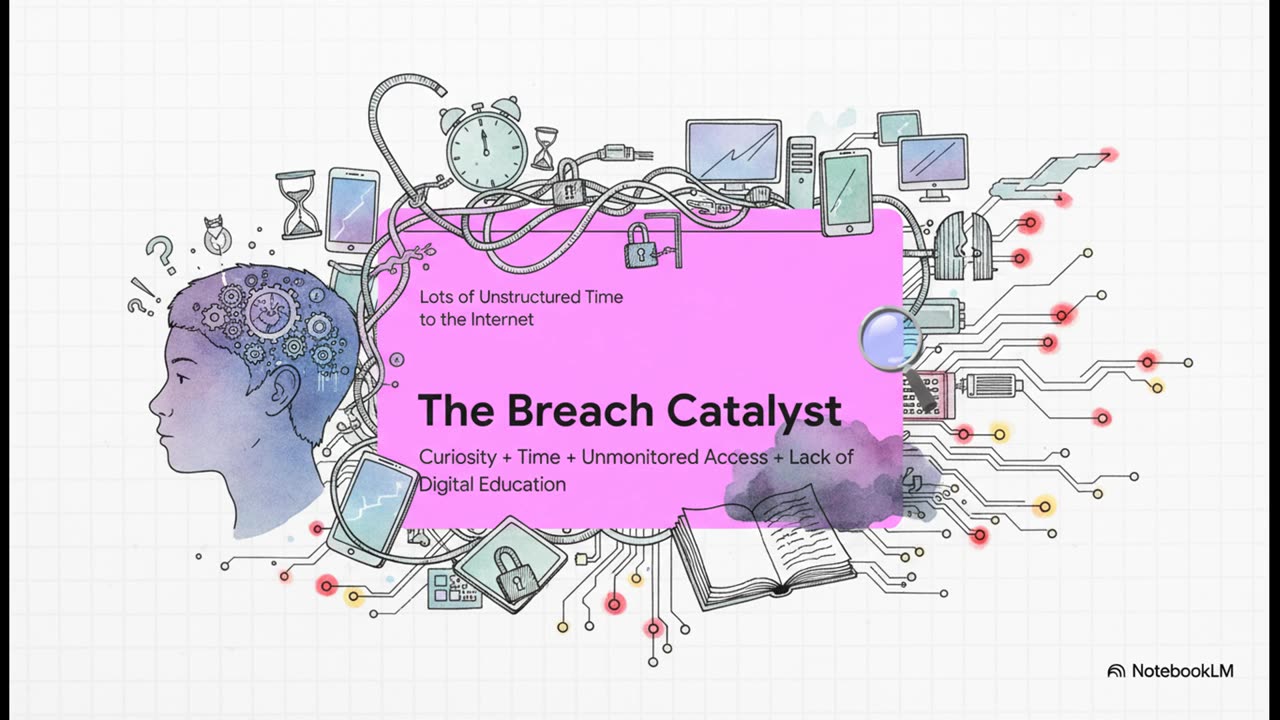Premium Only Content

Educating the Hacking Generation: School Cyber Threat Reform
Across the world, from Europe to Southeast Asia, from North America to Africa, schools are quietly confronting a digital security crisis. Behind the growing push for digital transformation in education —through online platforms, cloud storage, and smart classrooms —lies a dangerous vulnerability: young students, becoming more tech-savvy and curious, are gaining unauthorized access to school systems using readily available online tools. In many cases, they’re not just bypassing weak firewalls or guessing passwords; they’re using real hacking techniques. And often, no one notices until it’s too late.
The truth is clear: most schools around the world are not prepared for the new cybersecurity challenges. Their infrastructure is outdated. Multi-factor authentication (MFA) is seldom enforced. Devices are often shared or misconfigured. Teachers and administrators lack training. And students? They have plenty of time, curiosity, and access to a global internet where hacking tutorials, password crackers, and spyware tools are just a download away. This isn’t fiction. Reports from multiple countries show students hacking grades, accessing test answers, disabling monitoring software, or taking over school systems. In some cases, students have even been recruited into cybercriminal groups or manipulated by more skilled hackers.
But how does a teenager go from casual gaming or coding forums to hacking into digital infrastructures? The answer lies in a simple formula: curiosity, time, unmonitored access, and a lack of digital education. Combine these with the fact that many school systems fail to implement even the most basic cybersecurity measures, and the result is predictable. The issue is systemic. Merely installing antivirus software or blocking certain websites isn’t enough. Digital security in education requires a cultural shift, recognizing that students are both users and potential contributors or disruptors within the system. So far, most educational systems see cybersecurity incidents as just isolated misconduct. A student hacks a platform, and disciplinary action is taken. But rarely do they investigate why the breach happened in the first place. Seldom is the student’s skill redirected toward productive engagement.
What’s needed is a new approach, one that sees student hackers not just as threats, but as untapped resources. Many of these young people aren’t malicious. They’re experimenting, pushing boundaries, and in some cases, showing more technical skill than the staff hired to oversee school IT.
Globally, we need to incorporate supervised ethical hacking programs into education. Initiatives like “hackathons,” “capture the flag” (CTF) competitions, and ethical hacking clubs can turn digital curiosity into valuable skills. Schools should collaborate with cybersecurity companies, universities, and government agencies to offer mentorship and structured environments where students can learn about vulnerabilities safely and legally.
Some nations have started to explore this path. In the US, cybersecurity competitions at the high school level are increasing. In countries like Estonia and Singapore, cyber literacy is integrated into national curriculum strategies. However, these examples remain the exception rather than the norm. At the same time, infrastructure cannot be overlooked. Every school, regardless of location or budget, must implement a basic digital security strategy. This includes:
Require mandatory multi-factor authentication (MFA) for all staff and students. • Regular security audits of software and hardware.
Network segmentation to isolate critical systems.
Secure, encrypted storage of student data.
Training for all school personnel on phishing, social engineering, and digital hygiene.
Without these measures, any student with a browser and basic knowledge could become a threat or a victim.
Equally important is investing in people. Teachers, school administrators, and IT staff need ongoing professional development. Cybersecurity is evolving rapidly. Expecting a math teacher to recognize a sophisticated digital exploit without support is unrealistic. Schools must foster a culture where everyone, not just the IT department, understands and respects digital risk.
Additionally, parents must be included in this conversation. In many areas, families provide the devices students use to access school systems. Making sure those devices are secure and that students understand responsible use is crucial. Workshops, community outreach, and parent-specific resources can greatly help raise awareness beyond the classroom.
Governments and education departments must lead the way in establishing national cybersecurity standards for schools. The private sector, particularly companies in EdTech and cybersecurity, should collaborate to develop toolkits, grants, and open-source security platforms specifically designed for the education sector. Since the digital world has no borders, our defenses shouldn’t either. But technical measures alone won’t prevent a generation of students from exploring digital systems out of boredom or frustration. What’s needed is education in digital ethics. Children should learn early not only how to code but also why they shouldn’t hack. They need to understand the legal and social risks of cybercrime, and be shown how their skills can be used positively.
In many cases, the same students who try to hack school networks could, with proper mentorship, become the ethical hackers that organizations around the world are urgently hiring. The cybersecurity workforce gap is real, and education is where the pipeline starts.
So where do we go from here?
We need to stop thinking of cyber breaches in schools as rare events. They are signs of a bigger issue: a global education system that isn’t yet adapted to the digital world in which it now operates. The subsequent breach might not come from a Russian botnet or a hired hacker; it could come from a 16-year-old in a science lab, using code they found on GitHub.
It’s time to shift our approach: move from defense-only thinking to systemic reform, transition from punishment to engagement. Replace fear with empowerment. The truth is, today’s students will be tomorrow’s digital defenders. But only if we show them how.
Author: Alessandro Civati
Copyright 2025 Alessandro Civati – Protectect using Blockchain LutinX Technology: https://lutinx.com/
-

Side Scrollers Podcast
2 hours agoThis is the Dumbest Story We’ve Ever Covered… | Side Scrollers
2.9K -
 1:13:26
1:13:26
Steven Crowder
4 hours ago🔴 Jay Dyer on Hollywood, The Occult, and the Attack on the American Soul
190K113 -
 LIVE
LIVE
Sean Unpaved
2 hours agoNFL Thanksgiving Games Are Going To Be ELECTRIC! | UNPAVED
137 watching -
 29:07
29:07
The Rubin Report
4 hours agoAre Megyn Kelly & Erika Kirk Right About Our Political Divisions?
30.7K37 -
 27:09
27:09
VINCE
5 hours agoSaving America's Schools with Norton Rainey | Episode 177 - 11/26/25 VINCE
138K84 -
 2:03:57
2:03:57
Benny Johnson
4 hours agoFBI Director Kash Patel Makes January 6th Pipe Bomber Announcement: Massive Breakthrough, Stay Tuned
96.4K64 -
 1:06:17
1:06:17
Graham Allen
5 hours agoFAKE NEWS Is Everywhere!! Are We Living In The Upside Down?!
152K464 -
 2:59:36
2:59:36
Wendy Bell Radio
9 hours agoFeeding Their Greed
84.9K81 -
 1:55:12
1:55:12
Badlands Media
11 hours agoBadlands Daily – Nov. 26, 2025: Thanksgiving Optics, Turkey Pardons & Global Power Plays
63.7K11 -
 1:13:11
1:13:11
Chad Prather
20 hours agoGratitude That Grows in Hard Ground: A Thanksgiving Message for the Soul
92.4K45